Working to Achieve Sustainability at Nabegataki Falls
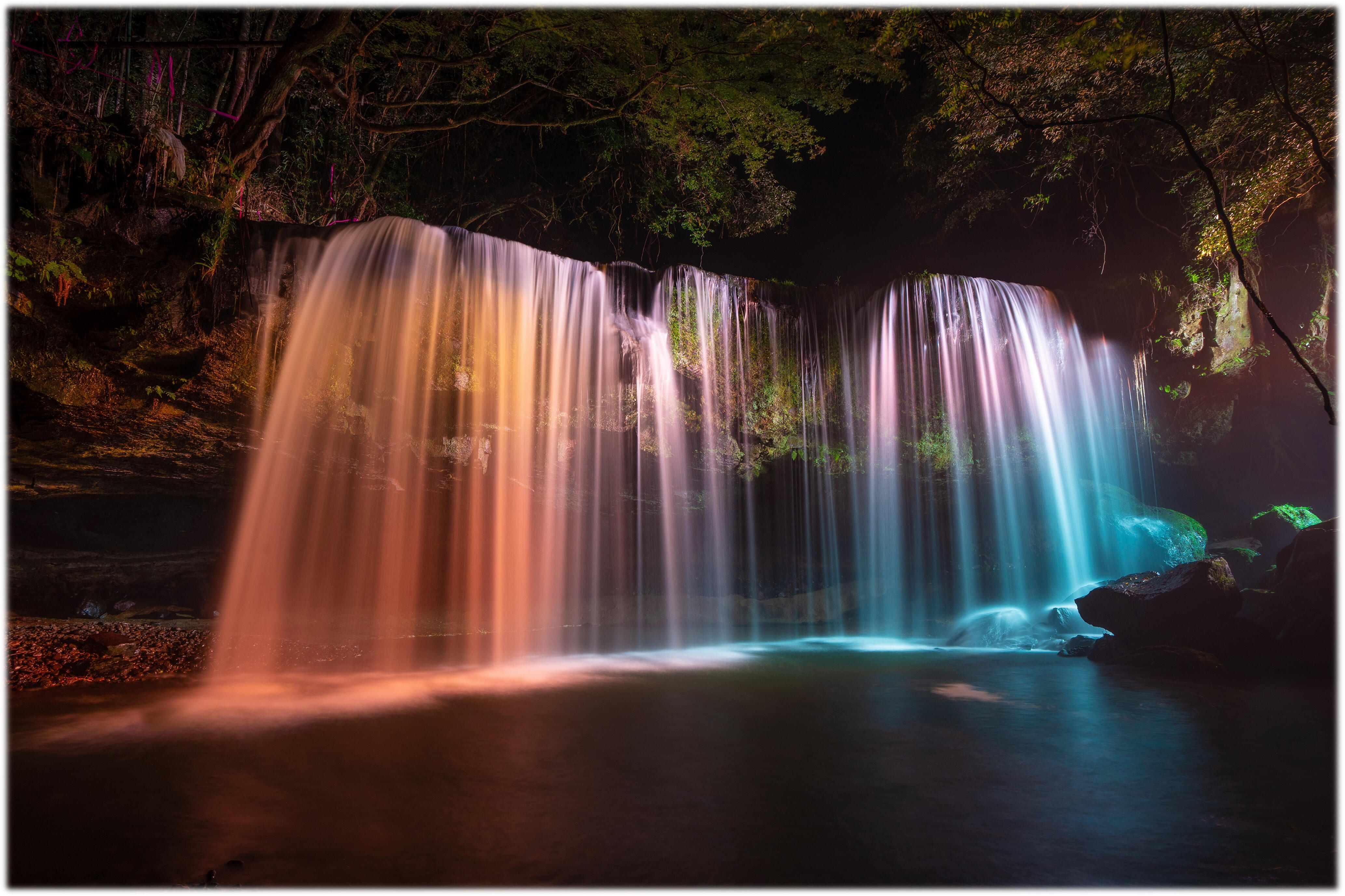
Tourism-related traffic congestion had long posed a problem for residents and visitors in the quiet town of Oguni in Kumamoto Prefecture.
Working closely with community stakeholders, the JTB Group crafted a multi-pronged solution using its proprietary Ticket HUB® system to manage vehicular traffic, improve the visitor experience, and prepare the community to support higher tourist volumes. Here’s the story.
The Challenges
Since opening to the public in 2012, Nabegataki Park in the picturesque Oguni area of Kumamoto prefecture in southwestern Kyushu, has been a popular visitor spot. Its waterfall, measuring approximately 10 meters high and 20 meters across, can be experienced at close proximity from the banks of the Takigawa River. Prior to COVID-19, the park would attract more than 3,000 visitors on a typical weekend.
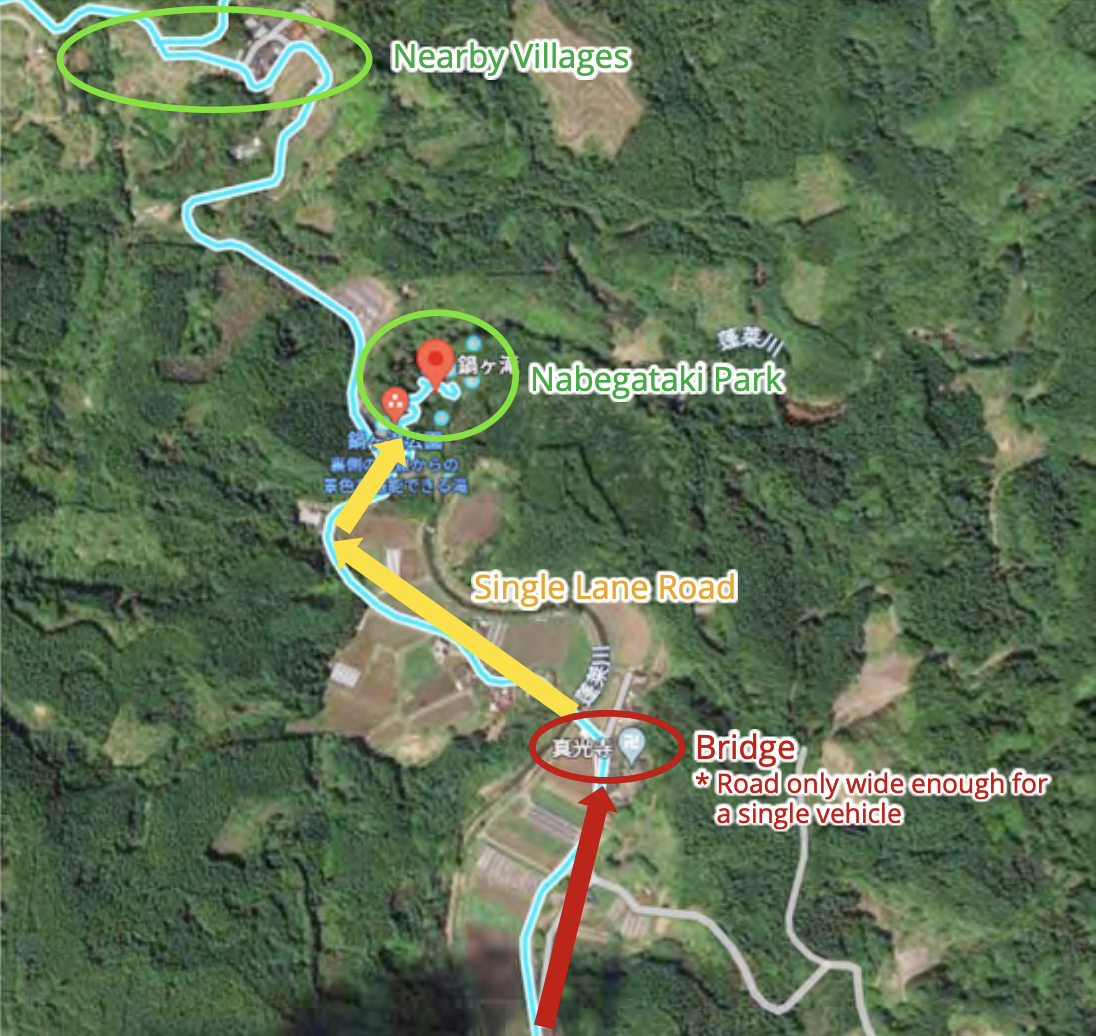
Given the narrow access road leading to the park, vehicular traffic would often snarl to a halt during major holidays. To alleviate this congestion nightmare, the town of Oguni converted the grounds of a nearby abandoned elementary school into a makeshift parking lot and initiated shuttle service to transport visitors to and from the park.
With the arrival of the pandemic, concerns over excessive crowding forced shuttle service to be discontinued and the park itself was sometimes closed to the public during peak holiday seasons.
As Japan emerged from the grip of the pandemic and the demand for tourism began to reemerge, the JTB Group proposed an innovative visitor management solution.
The Solution
(1) The Ticket HUB® Booking System
The new solution formulated by the JTB Group involved the deployment of Ticket HUB®, JTB’s proprietary digital booking platform. Pilot testing of the system commenced in October 2021 and all visitors to Nabegataki Park were required to make advance reservations beginning the following month.
(2) Creation of the Oguni Call Center
In order to make the transition as smooth as possible, JTB launched the Oguni Call Center to respond to inquiries regarding the reservations process.
(3) Pilot Testing
As part of the pilot testing of the new system, JTB created a temporary reservations ‘checkpoint’ on the grounds of an abandoned school located along the access road to the park. Checkpoint personnel were responsible for conducting the following activities:
- Tracking the average duration of visits
- Setting and evaluating reservation quotas
- Assisting individuals without reservations
- Installing signage and providing directions
- Ticket sales desk and equipment operations
(4) Analysis of Booking Data
Using the data capture functionality of the Ticket HUB® system, JTB developed a series of questions aimed at better understanding the demographic profile of park visitors.
Number of Vehicles per Party
By determining the average number of passengers per vehicle, JTB was able to refine reservations quotas.
Gender/Age Data
Used to tailor tourism promotions.
Prefecture of Residence
Data regarding the home prefecture of park visitors was helpful in establishing the geographic focus of future communications and promotions.
(5) Getting the Word Out
In order to get the word out about the need for reservations, JTB’s communications strategy relied on the following media mix:
Posters, flyers, websites, online advertising, print advertising, transit advertising
Benefits of the New System
(1) Vehicular Congestion Eliminated Using Ticket HUB® (2) Creation of the Oguni Call Center
Careful planning and coordination ensured a smooth rollout of the Ticket HUB® system. Initial pilot testing of the system was conducted during the off-season in autumn 2021. The following year, JTB proceeded with proof-of-concept testing during the heavy travel seasons of Golden Week and Obon. To the delight of residents and visitors, Oguni experienced zero traffic congestion during a major holiday period for the first time since the opening of Nabegataki Park in 2012.
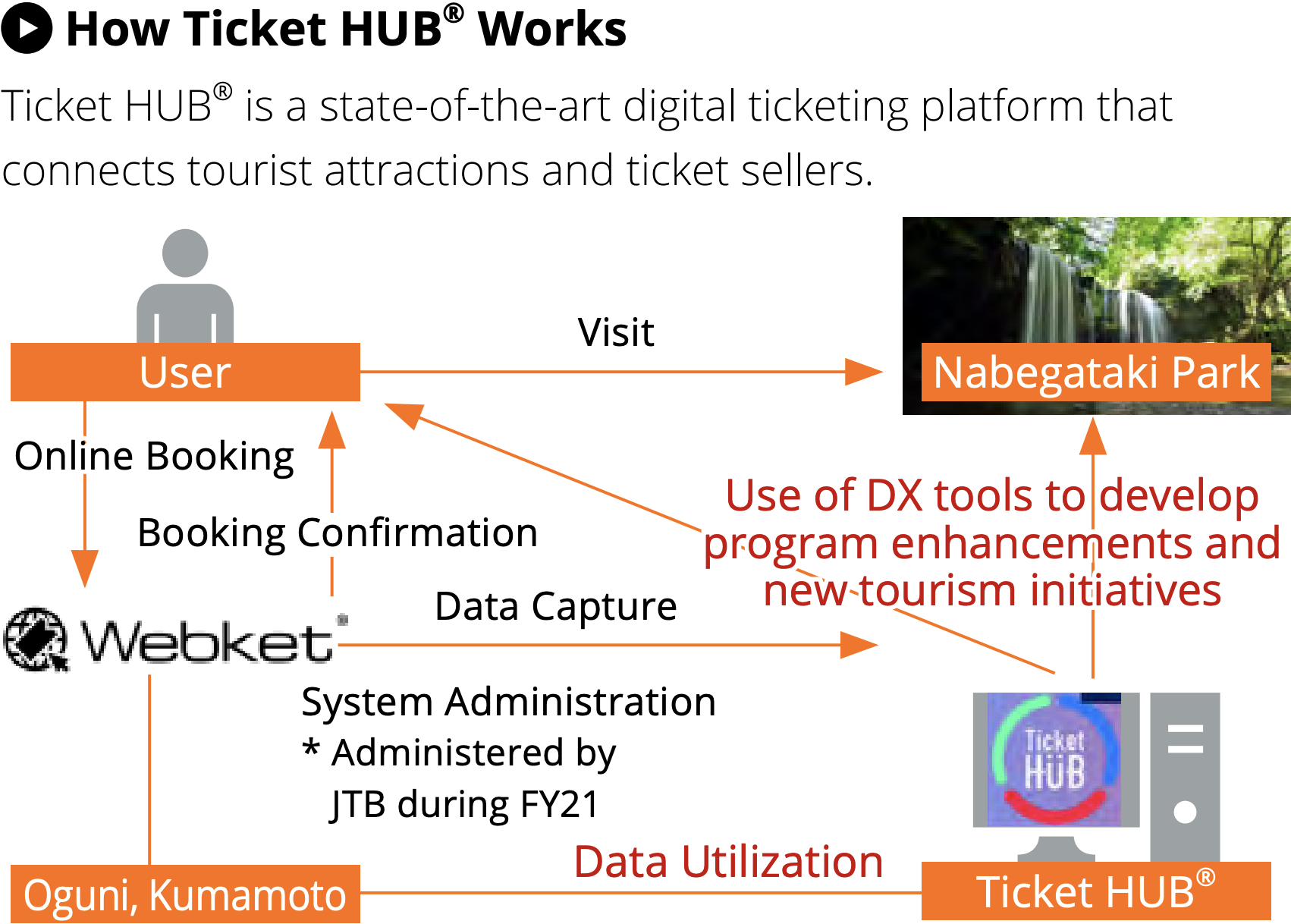
Through pilot testing, it became clear that the success of the new system world hinge upon our ability to inform as many visitors as possible about the need for advance reservations as well as our ability to assist visitors heading to the park without reservations. For the JTB Group, the Oguni success story is about more than the use of digital technology to control vehicular traffic. We view the new Ticket HUB® system as a ‘platform of opportunity’ for the town of Oguni. Using visitor demographic data collected through the system, JTB seeks to develop further system enhancements and to propose additional initiatives aimed at boosting tourism to the Oguni area.
(3) Pilot Testing
In order to minimize confusion, the JTB Group deployed heavy on-site staffing during the initial rollout phase. A temporary reservations ‘checkpoint’ was created on the grounds of a nearby abandoned school to check visitor reservations, respond to questions, and provide assistance to individuals without reservations. As a result of these efforts, the average reservation rate quickly reached 60%, eliminating the traffic congestion that had previously plagued Oguni during peak travel seasons. It became clear, however, that some visitors were either unwilling or unable to make reservations online. In order to solve this problem, JTB created additional ticket sales desks at other physical locations.
(4) Analysis of Booking Data
An analysis of visitor age revealed that the park was most popular among individuals in the 20-29, 30-49 and 50-69 age groups, in that order. This data suggested the need to focus future communications efforts on the ‘active’ demographic.
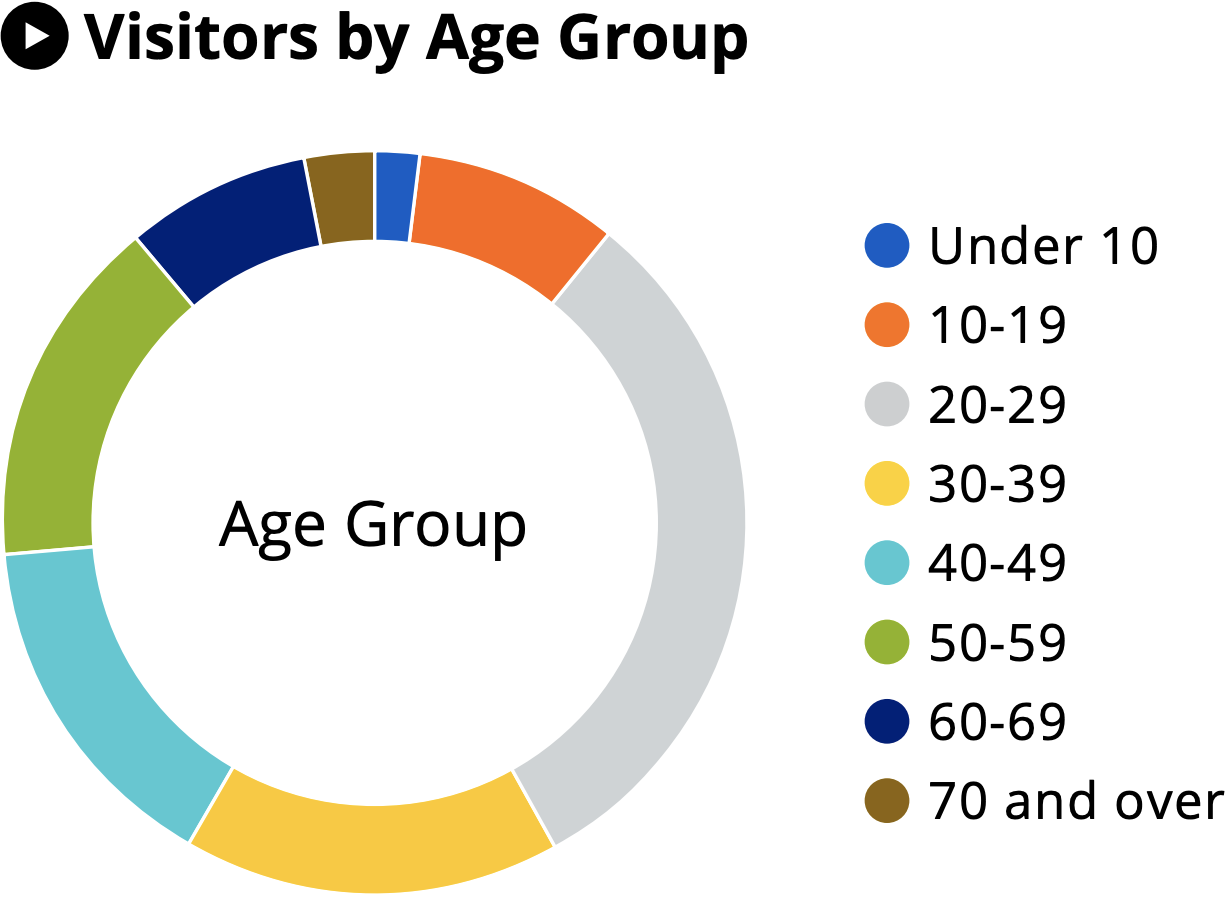
While visitors from Kumamoto Prefecture and neighboring Fukuoka Prefecture were the most numerous, the park also attracted a significant number of tourists from the Kanto and Kansai regions of Japan. This data suggested that future promotional efforts should be focused in the Fukuoka and Kumamoto metropolitan areas of Kyushu as well as the Kanto and Kansai regions.
JTB also examined how many days in advance visitors booked their reservations. Same-day reservations were by far the most common. Only a modest percentage of bookings were made 1, 2 or 3 days ahead of time and few if any visitors made reservations weeks in advance. This data provided useful clues into the best way to structure our communication efforts.
As for the time of day of peak visitation, the data collected by JTB confirmed that morning visitor counts typically began to increase with the 10:20AM time slot and peak at the 11:00AM slot while afternoon visitor counts typically began to increase with the 1:00PM slot and peak at the 2:20PM slot. The fact that visitation peaks immediately preceded and followed the lunch hour suggested that many visitors were coming to the park after checking out from their hotels in the morning or prior to checking into their hotels in the mid-afternoon.
(5) Getting the Word Out
JTB’s communications strategy relied on a combination of online and real-world media to spread the word about the need for advance reservations. We disseminated hundreds of posters and thousands of flyers via the local tourism association as well as through lodging facilities and restaurants in the Oguni area.
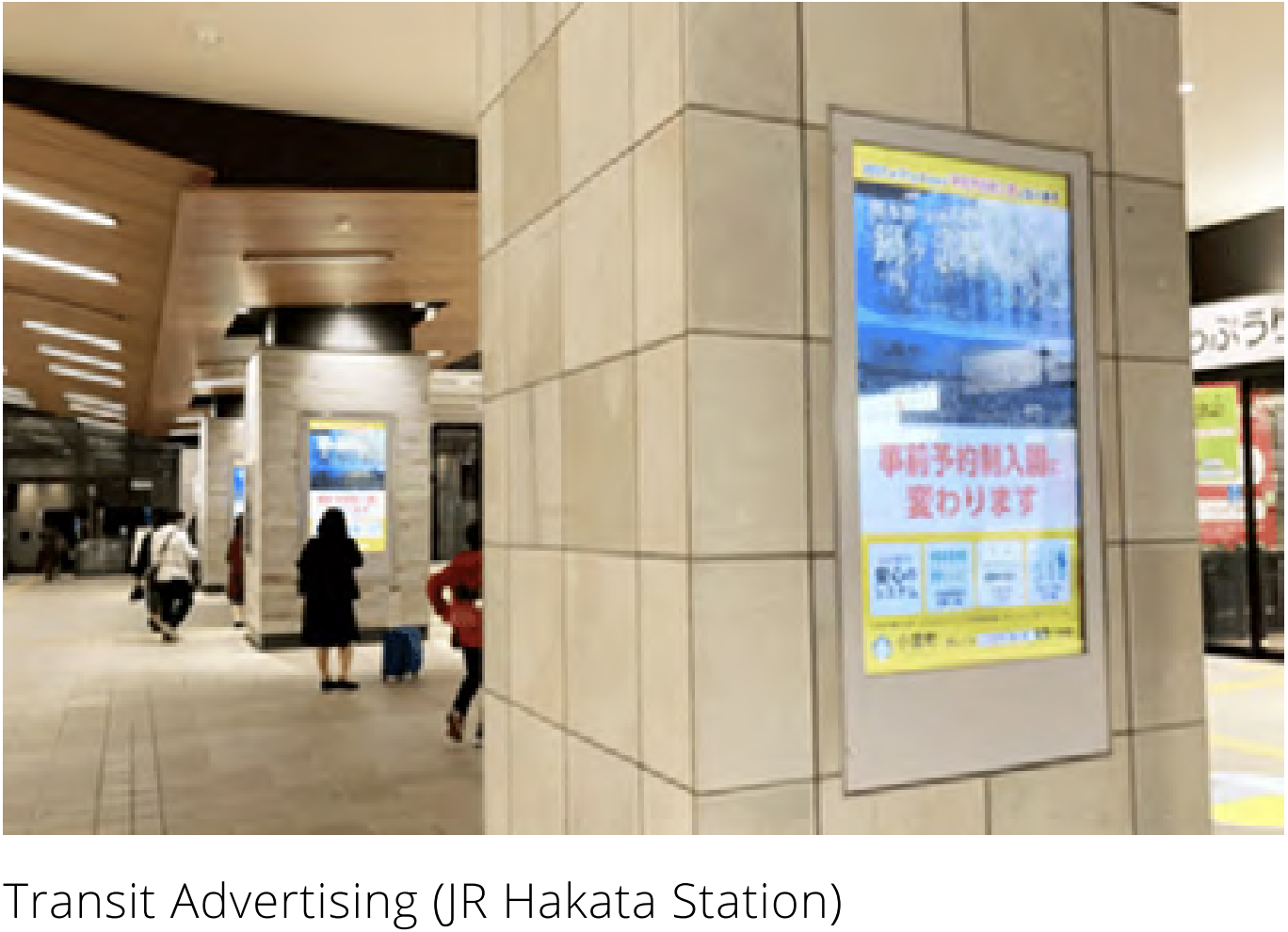
Our Web communications focused primarily on mobile users as data collected through the Ticket HUB® system revealed that system access from mobile devices (smartphones/tablets) outnumbered desktop access by a ratio of 4:1. Our transit advertising efforts focused primarily on digital signage in the Hakata and Kumamoto train stations and the Fukuoka City Subway. JTB will continue to target future communications along the most popular access used by visitors area.
Making a Positive Difference
| Benefits | Description | BEFORE | AFTER | ||
|---|---|---|---|---|---|
| Quantitative | Qualitative | Quantitative | Qualitative | ||
| Traffic and Crowd Control | Traffic Jam Duration | Up to 3 hours during peak season | - | Zero congestion | - |
| Closed Spaces/Crowding/ Close Contact (during the pandemic) | - | Closed Spaces: None Crowding: Critical Close Contact: Critical | - | Closed Spaces: None Crowding: None Close Contact: None | |
| Reduced Environmental Footprint | Reduction in paper and CO2 emissions (approx.) | 230,000 tickets 46,000g | - | 160,000 tickets 32,000g * Will be reduced to zero once the system is fully online | - |
| JTB Group | Ticket HUB® system validation | - | Development of new applications | - | International recognition |
Awards
(1) Green Destinations*1
Top 100 Sustainability Stories of 2022
*1 Green Destinations is an international certification body accredited by the Global Sustainable Tourism Council (GSTC) to certify compliance with GSTC’s global criteria for tourism sustainability.
(2) Green Destinations
Green Destinations Story Awards 2023
3rd Place in the “Governance, Reset & Recovery” Category
(3) Japan Association of Travel Agents (JATA)
Honorable Mention in the Inaugural JATA SDGs Awards
Message
JTB’s Signature Approach to Sustainability

Ryosuke Nakamura Sales Department Kumamoto Branch Office JTB Corp.
Overtourism can jeopardize the sustainability of any tourist destination. In the case of Oguni, the JTB Group successfully harnessed the power of Ticket HUB®, a proprietary DX solution offered by Good Fellows JTB, to resolve challenges associated with vehicular traffic and crowd control. These efforts have garnered local praise as well as international accolades.
By harnessing data collected through pilot testing and ongoing system operations, we will continue to develop new solutions aimed at promoting sustainable tourism management and community development in Oguni and beyond.
Share this article



